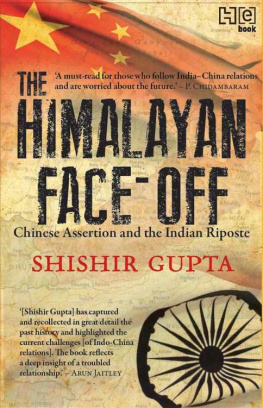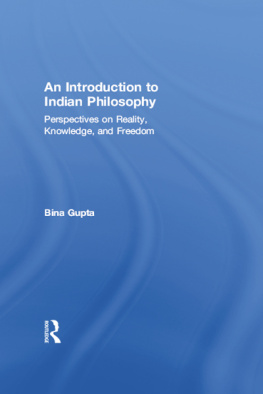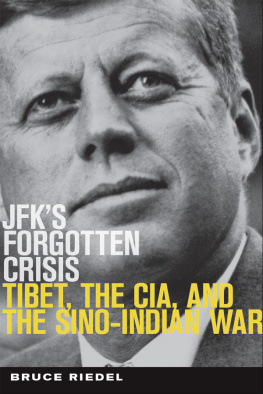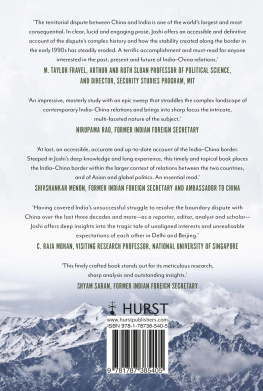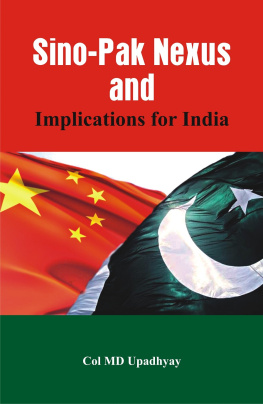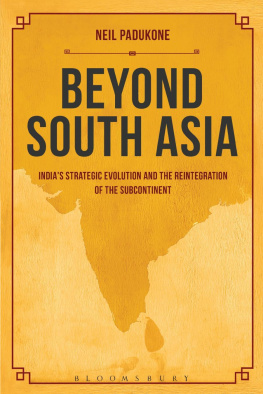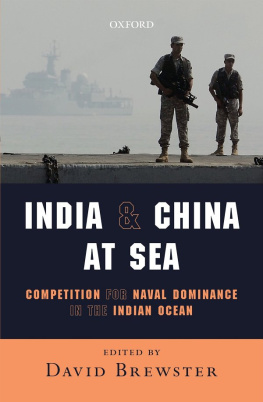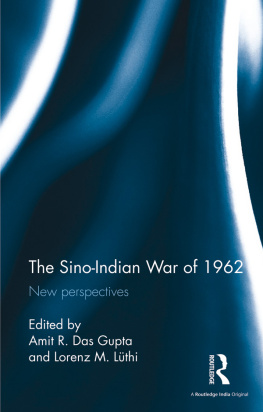The Himalayan Face-Off
Chinese Assertion and the Indian Riposte
Shishir Gupta

P RAISE FOR
The Himalayan Face-Off
When two elephants fight or make love, it is the grass that suffers, goes the saying. The rise of China and the aspirations of India will have a profound impact on the world. The 21-day stand-off between the two countries in April 2013 was the trigger for this book. The enormous research that has gone into writing this book is truly impressive. The authors capacity to correlate historical events and contemporary developments is a measure of that research. A must-read for those who follow IndiaChina relations and are worried about the future.
P. Chidambaram
The emergence of China as an important economic player has brought about a paradigm shift in the region. Its assertiveness is visible and at times, provocative. It has been going slow in resolving the boundary issues with India. Its attitude on Arunachal Pradesh is indicative of its expansionist designs. Its statements on Arunachal Pradesh, stapled visas [and] frequent incursions are a grim reminder that India cannot lower its guard. India wants cordiality with its neighbours that can only be on basis of reciprocity. Shishir Guptas book, The Himalayan Face-Off: Chinese Assertion and the Indian Riposte is based on exhaustive research on the history of IndoChina relationship in the past 50 years. He has captured and recollected in great detail the past history and highlighted the current challenges. The book reflects a deep insight of a troubled relationship.
Arun Jaitley
First published in 2014 by Hachette India
(Registered name: Hachette Book Publishing India Pvt. Ltd)
An Hachette UK company
www.hachetteindia.com

This ebook published in 2014
Copyright 2014 Shishir Gupta
Shishir Gupta asserts the moral right to be identified as
the author of this work
Map on page 3 courtesy Shishir Gupta
Maps on pages 65, 94, 125 & 139 illustrated by KBK Infographics
All rights reserved. No part of the publication may be reproduced, stored in a retrieval system (including but not limited to computers, disks, external drives, electronic or digital devices, e-readers, websites), or transmitted in any form or by any means (including but not limited to cyclostyling, photocopying, docutech or other reprographic reproductions, mechanical, recording, electronic, digital versions) without the prior written permission of the publisher, nor be otherwise circulated in any form of binding or cover other than that in which it is published and without a similar condition being imposed on the subsequent purchaser.
The views and opinions expressed in this book are the authors and the facts are as reported by him. The publishers are not in any way liable for the same.
Print edition ISBN 978-93-5009-579-9
Ebook edition ISBN 978-93-5009-606-2
Author photo by Tashi Tobgyal
Cover design by The Visual Press
Hachette Book Publishing India Pvt. Ltd
4th/5th Floors, Corporate Centre
Sector 44, Gurgaon 122003, India
Typeset in Sabon Roman 10.5/13
by InoSoft Systems, Noida
To Shailja Vaidya, Aditya Vikram,
Anukriti Gaura & Pug Kiki
CONTENTS
The face-off between troops of the Indian Army and the intruding Chinese Peoples Liberation Army (PLA), at a rivulet called Raki on the high mountain plateau of Depsang in eastern Ladakh, on 17 April 2013 may be a minor speck on the humungous canvas of 10,000 years of combined existence of the two states, but contemporary history will record the 21-day stand-off as a watershed in bilateral relations between New Delhi and Beijing. The Chinese have called the stand-off a non-event, as the PLA was well within Chinas territorial limits. PLA troops withdrew from the stand-off on 5 May 2013, but only after underlining the fact that the 3,488 km Line of Actual Control (LAC) between the two neighbours would remain a source of military flashpoint.
Change was more evident on the Indian side, as for the first time since the 1962 war between the two countries, India took up the Chinese gauntlet and openly asked Beijing to vacate the Depsang plains. While the incident revived memories of the humiliating war among the Indian public, Prime Minister Manmohan Singhs government realized deception and realpolitik were legitimate diplomatic tools while engaging with the Middle Kingdom. One gets a glimpse of these tools in the Chinese diplomatic armoury in the correspondence between Indian Prime Minister Jawaharlal Nehru and his Chinese counterpart Zhou Enlai on the boundary dispute in the run-up to the 1962 war. A democrat and rather woolly idealist, Nehru in a letter told Premier Zhou that China could not walk out of historic boundary accords between Tibet and British India just because Beijing was weak. In his 26 September 1959 letter to Zhou, Nehru wrote: All Chinese governments have respected the Indian border. The fact that previous Chinese governments were weak is no answer.
This book explores the friction between a near-superpower and an aspiring one, as the growing influence of an assertive communist China in todays world intersects with the interests of a democratic India. With the 1962 war as an important context, the book uncovers the growing uneasiness in India about Chinese moves to confine India within South by its young and energetic External Affairs Minister Salman Khurshid is purely optical, New Delhi, particularly Prime Minister Manmohan Singh and Defence Minister A.K. Antony, are seriously concerned about Beijings moves on the global scale and its impact on Indias national security. Far from sounding jingoistic or advocating military steps against China, the book records the steps that India has taken post the unveiling of the Look East policy in 1995 by then Prime Minister P.V. Narasimha Rao to safeguard Indias territorial limits and its national interests.
The saving grace is that Indias China policy has gathered political consensus across party lines, and was pursued with equal vigour by the BJP-led National Democratic Alliance (NDA) government headed by Prime Minister Atal Behari Vajpayee between 1999 and 2004. Prime Minister Manmohan Singhs understanding of an assertive China and its ramifications on the Asian security calculus and the world at large are mentioned at length. It is quite evident that while China gets insecure about unrest in Tibet and Xinjiang, its assertiveness in East Asia and South Asia will lead to serious consequences by rearming Japan and increasing the USs focus on the Asia-Pacific region, while bolstering the confidences of Vietnam and Philippines.
The book also records Chinese infrastructure development and military capacity building in Tibet and Xinjiang, with serious strategic consequences to India, as well as the steps New Delhi has taken since the turn of the twenty-first century to safeguard its national security. A subtle message from Delhi post the Depsang intrusion has been that peace on the border is central, or what Antony called an important guarantor, for growth in bilateral ties including trade, and that any PLA assertiveness on the border would be equally matched by the Indian Army. This book exposes the gross asymmetry between the huge Chinese deployment, infrastructure development and military capabilities on the SinoIndian border, while also discussing lagging Indian capacities and the efforts New Delhi is making to catch up to its neighbour. It also explores the steps China has taken to expand its influence in South Asia and the Indian Ocean in order to win the confidence of Indias neighbours in the Himalayan belt as well as on the latters eastern, western and southern peripheries.

